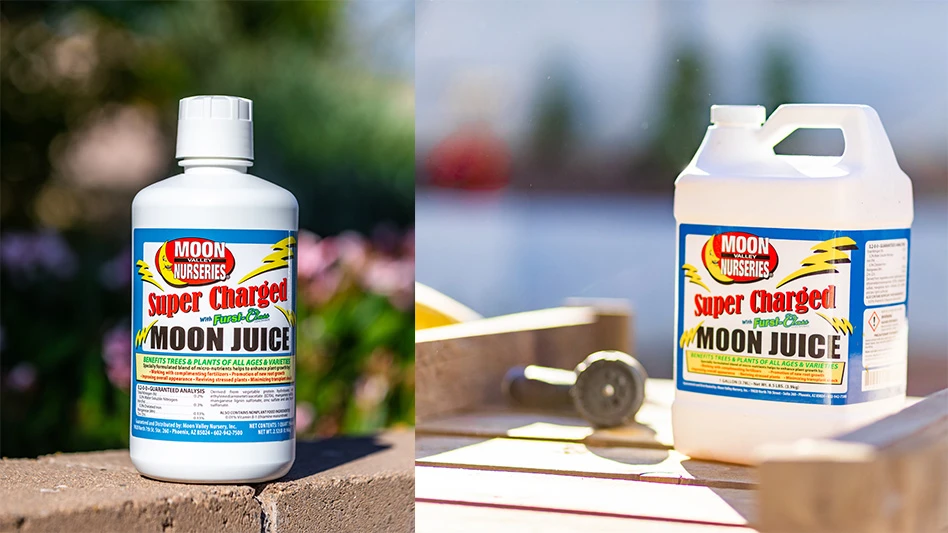
WASHINGTON, DC and COLUMBUS, Ohio — Boxwood blight (BB) was first identified in the U.S. in the fall of 2011 and has since been detected in at least 22 states across the U.S., in both nursery and landscape settings. Two closely related fungi,Calonectria pseudonaviculata and C. henricotiae, cause boxwood blight on three plants: boxwood (Buxus), Pachysandra, and sweet box (Sarcococca).
Since 2012, BB research has been supported through the Horticulture Title of the Farm Bill, Section 10007. In FY 2016, this funding exceeded $486,000 and supports research collaborations among IR-4, the Connecticut Agricultural Experiment Station (CAES), Cornell University, Hood College, Oregon State University, North Carolina State University (NCSU), Virginia Tech (VT), and USDA-ARS.
The Horticultural Research Institute, a leading force in the boxwood blight fight, continues to monitor, support, and communicate BB research activities to the industry. Research activities have been heavily focused on management measures:
Sanitation and disinfection
Sanitation and disinfection are two critical components of all disease control programs. Soil in nursery beds and benches can harbor BB microsclerotia, overwintering structures in dead leaves that will be viable for years. Several commercially available sanitizers, such as ethanol and bleach, were evaluated for their efficacy against microsclerotia in lab studies. Ethanol was very effective in Dr. Nina Shishkoff’s (USDA-ARS) trials and completely killed conidia in leaf debris in studies conducted by Norm Dart, VT. Studies at CAES have shown bleach to be effective against BB spores as well.
Mulching

Blighted leaves and distinct black stem cankers caused by BB
Fungicides
Few data exist on what fungicides best control BB. Dr. Jim LaMondia at CAES is comparing commercially available products and has identified some that are effective. A number of products were highlighted for their control activity, including pyraclostrobin and propiconazole. Both products have demonstrated good preventive control. Propiconazole, in particular, shows promise for early curative control. In fact, most triazole fungicides (also known as DMI’s) control BB preventively, as does preventive sprays of chlorothalonil. Always consult current product labels before applications.
Biological control
Dr. JoAnne Crouch, USDA-ARS, and Dr. Chuan Hong, VT, are screening large numbers of microorganisms in the hopes of finding candidates for biological control of BB. Endophytes, microorganisms that live in or on a plant without causing disease, have been identified associated with boxwood leaves and roots. Often biological control agents have complex interactions with plants; so, this work can be tedious and time consuming.

C. pseudonaviculata white sporulation
Heat therapy
Thermal inactivation, or heat therapy, has been used successfully in the past to eliminate pathogens from woody propagated plant tissue. Dr. Marc Cubeta’s lab at NCSU is conducting experiments to examine the response of C. pseudonaviculata and boxwood varieties to treatment with hot water to manage BB during propagation. After exposure to hot water at 47.5 °C (117.5°F), conidia are either killed or impaired in their ability to cause infection. Preliminary results suggest that certain boxwood varieties are still able to root after exposure to these temperatures. Several varieties are being screened, and studies are ongoing to determine whether the pathogen can be eliminated from infected cuttings in this manner.
Other
AmericanHort and its research affiliate, the Horticultural Research Institute, supported funding of this research through the Farm Bill Section 10007. This collaboration is coordinated by the IR-4 Program, a USDA-sponsored entity to increase the specialty crop industry’s access to labeled pest management products. AmericanHort will present a webinar series later this year to discuss this research in greater detail.
For more information about HRI, its grant-funded research, scholarships, or programming, visit www.hriresearch.org or contact Jennifer Gray at 614.884.1155.
Photos courtesy Margery Daughtrey, Cornell University.
Latest from Nursery Management
- Society of American Florists accepting entries for 2025 Marketer of the Year Contest
- Sustainabloom launches Wholesale Nickel Program to support floriculture sustainability
- American Horticultural Society welcomes five new board members
- American Floral Endowment establishes Demaree Family Floriculture Advancement Fund
- The Growth Industry Episode 3: Across the Pond with Neville Stein
- The Growth Industry Episode 2: Emily Showalter on how Willoway Nurseries transformed its business
- March 2025 issue recap
- Gratitude as a marketing strategy





